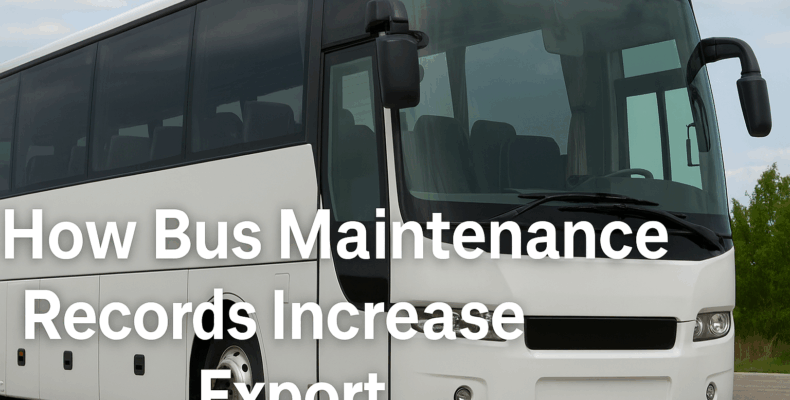In the competitive world of used Japanese bus exports, one overlooked yet powerful asset is the maintenance record. While many buyers focus on mileage, model year, and appearance, the true value often lies in the service history.
Maintenance records not only reflect how well a bus has been cared for, but they also provide global buyers with confidence and transparency. Let’s explore how these records can significantly boost export value and help sellers close deals faster.
🔍 What Are Bus Maintenance Records?
Maintenance records include detailed logs of all repairs, oil changes, tire replacements, inspections, and scheduled services. These are usually kept by fleet owners, transportation companies, or dealerships.
While some buses only have a simple inspection sheet, others come with complete service histories, which are much more valuable to international buyers.
💡 Why Maintenance Records Matter to Overseas Buyers
1. Proves Proper Care
A documented service history shows that the bus was consistently maintained. This proves the seller didn’t just clean it before export.
2. Boosts Resale Trust
Buyers from Africa, the Caribbean, Southeast Asia, and South America often face poor local servicing conditions. Therefore, they prefer units with a known maintenance past.
3. Reduces Import Risk
A bus with verified maintenance history is less likely to break down soon after arriving. This protects the importer from surprise costs.
4. Higher Valuation
Buses with service records usually sell for 10–15% higher prices, especially when compared to similar units with no documentation.
📈 Export Value Comparison
| Condition | Without Records | With Maintenance Records |
|---|---|---|
| Initial Trust | Low | High |
| Selling Speed | Slower | Faster |
| Final Price | Lower | Higher |
| Inspection Success | Uncertain | More Reliable |
As you can see, adding documentation to your unit enhances its appeal and resale power.
🌍 Real-World Demand by Region
-
Kenya & Tanzania: High demand for buses with full service logs.
-
Philippines: Bus companies want regular oil change and brake system records.
-
Jamaica & Trinidad: Importers often reject buses without proven maintenance.
-
Fiji & Mauritius: Tour companies prefer buses with low wear and full servicing.
In short, maintenance records help you stand out in regions where quality is king.
🧰 What Buyers Look For in Records
-
Frequency of Oil Changes (every 5,000–10,000 km)
-
Brake Inspections
-
Tire Replacements and Rotations
-
Cooling System Service
-
Transmission and Clutch Work
-
Professional Workshop Stamps or Receipts
Additionally, digital or bilingual documents add more credibility when selling to English-speaking markets.
🛠️ Tips for Exporters
-
Ask Japanese owners or dealers for records before buying buses.
-
Translate key pages if exporting to non-Japanese markets.
-
Keep digital copies ready for easy sharing with buyers.
-
Highlight the maintenance record in your listings and social media posts.
🔗 Trusted Exporter Recommendation
Looking for a seller who always provides fully inspected, well-documented Japanese buses?
👉 Top 5 Trusted Japanese Used Truck Exporters for Global Buyers
These companies have experience in handling detailed inspections and transparent documentation.
✅ Final Thoughts
If you’re a global buyer or reseller, choosing buses with clear maintenance records is not just a wise move—it’s a profitable one. Not only will you gain more trust, but you’ll also enjoy higher resale prices and fewer complaints post-sale.
As the global used bus market grows, documentation equals value. So next time you buy, ask for those records—you’ll thank yourself later.
